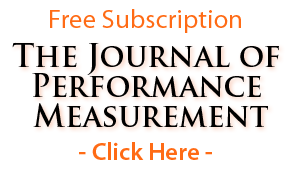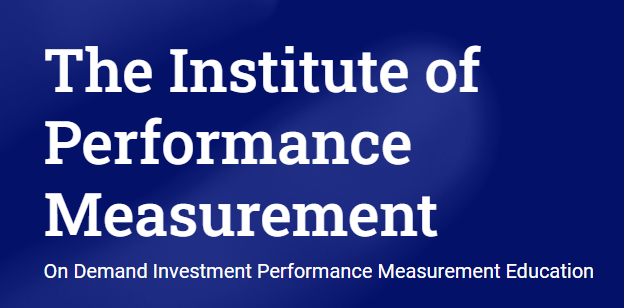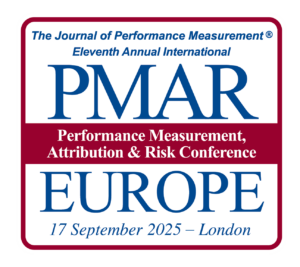GIPS® Tips
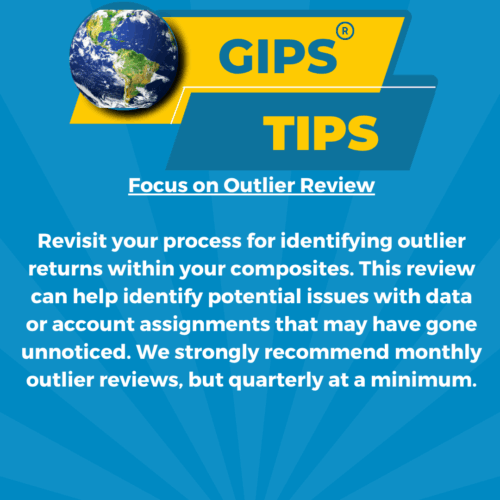
Experience “White Glove” GIPS Standards Verification With TSG
Are you tired of being treated like just another number by your GIPS verifier? At TSG, we prioritize your satisfaction and success above all else.
Partnering with us means gaining access to a team of seasoned GIPS specialists dedicated to delivering unparalleled service and exceptional value. Whether you’re seeking a new verifier, preparing for your initial verification, or just starting to explore GIPS compliance, TSG is the best choice.
Why Choose TSG?
Unmatched Expertise: Our experienced team brings unmatched proficiency in the GIPS standards, ensuring thorough and efficient (not “never-ending”) verifications.
Personalized Support: We understand that the journey toward GIPS compliance is complex. That’s why we offer ongoing support and guidance as needed, as well as access to a suite of exclusive proprietary tools, designed to make compliance and verification as easy as possible for you and your firm.
Actionable Insights: When you choose TSG, you will work with ONLY highly experienced senior-level GIPS and performance specialists. Their expertise translates into actionable advice, helping you navigate the complexities of the Standards in the most ideal way for your firm.
Hassle-Free Experience: At TSG, we guarantee your satisfaction and we do not lock our clients into long-term contracts.
Ready to Experience the TSG Difference?
Take the first step toward a better GIPS standards verification. Schedule a call or request a no-obligation proposal today at GIPSStandardsVerifications.com.
The Journal of Performance Measurement®
This month’s article brief spotlights “Explaining Risk-Adjusted Performance Using Vectors” by Arun Muralidhar, Ph.D. and Lester Seigel, Ph.D., which was published in the Spring 2025 issue of The Journal of Performance Measurement. You can access this article by subscribing (for free) to The Journal (link here).
Risk-adjusted performance theory equations are often dry and not always obvious to the reader, who may be more visual. In this brief note, we try to expand on the idea of using graphical vector representations of finance concepts to display some simple themes in risk-adjusted performance, with the goal of creating a new visual representation of the same ideas, as this has not been done before. We use the M-cube risk-adjusted performance measure and Ambarish-Seigel luck versus skill measure to make this point. The key aspect to the vector representation is that portfolios can be represented as vectors (including portfolios of multiple assets), and the correlation parameter is a cosine. These two simple acknowledgments lead to very fascinating visual representations of previously published research and open a new avenue to a field we call Vector Finance.
To confirm your email address, click the graphic below. If you’re a subscriber but haven’t received a link to the current issue, please reach out to Doug Spaulding at DougSpaulding@TSGperformance.com.
TRIVIA TIME
Since it is Summer, we are giving you an extra month to respond.
Try questions from Harvard’s introductory calculus course, adapted to be multiple choice.
1 OF 3
Marta is watching a bacteria sample exponentially decrease in size. At 3:00 p.m., there are 2,000 micrograms of bacteria, and the sample is decreasing in size at a rate of 500 micrograms/hour. How large is the sample of bacteria when the sample is decreasing at a rate of 100 micrograms/hour?
- 400
- 600
- 1,200
2 OF 3
A two-part question: An epidemic is spreading through an island, and the number of cases is growing exponentially. At the start of the epidemic there were 10 cases and the total number of cases triples every 14 days. What is the percent increase in the total number of cases between days 5 and 19?
- 100%
- 200%
- 300%
3 OF 3
What is the daily percent increase in the total number of cases?
- 108%
- 79%
- 8%
Please answer all questions to receive a score. Submit your responses to PFowler@TSGPerformance.com
Upcoming Webinars / Surveys
In Case You Missed It…
Webinar Replay: Should Your Firm Pursue GIPS® Compliance and Verification?
Webinar Replay: Recently Published SEC Marketing Rule FAQ
Article Submissions
The Journal of Performance Measurement® Is Currently Accepting Article Submissions
The Journal of Performance Measurement is currently accepting article submissions on topics including performance measurement, risk, ESG, AI, and attribution. We are particularly interested in articles that cover practical performance issues and solutions that performance professionals face every day. All articles are subject to a double-blind review process before being approved for publication. White papers will also be considered. For more information and to receive our manuscript guidelines, please contact Douglas Spaulding at DougSpaulding@TSGperformance.com.
Submission deadlines
Fall Issue: October 13, 2025
Winter Issue: January 12, 2026
For any questions, please reach out to Doug Spaulding at DougSpaulding@TSGperformance.com.
Book Review
101 Essays That Will change The Way you Think, by Brianna Wiest
Review by David D. Spaulding, DPS, CIPM
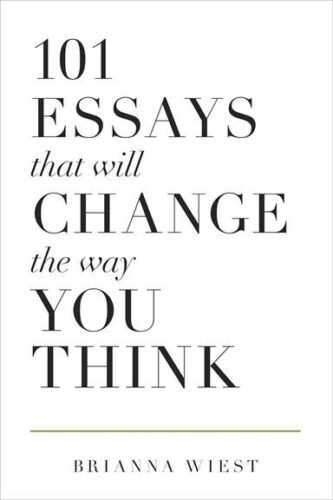
Where do we get ideas on books to read? Probably several sources.
Occasionally, someone just gifts me a book, thinking I’ll enjoy it. Sometimes, I get a recommendation. Often, I get ideas from the WSJ’s book reviews.
I enjoy visiting bookstores and just walk around to discover books I’ll enjoy. Unfortunately, there seem to be fewer and fewer of them.
In the movie You’ve Got Mail, it seemed that the colossal book stores (Tom Hanks’ “Fox Books”) would win out over the smaller ones (Meg Ryan’s “The Shop Around the Corner”), but perhaps it’s the opposite. Borders, which Fox Books seems to have mirrored, filed for bankruptcy in 2011, followed by the liquidation of all their stores. While Barnes & Noble has, at times, looked weakened, it seems to be doing well.
My wife and I visited Livraria Lello in Lisbon in November 2023, when we were there for the EMEA Performance Measurement Forum meeting.

They actually charge admission (though you get a credit that you can apply to a purchase, which we did). Such a treasure.
When we were in New Jersey for this year’s PMAR conference, we visited Labyrinth Books in Princeton, right across the street from the campus. There, we picked up a couple books and a nice book bag. And I can’t visit London without visiting Hatchards on Piccadilly.
Next month I will take a week to think and reflect; this week will be based on Bill Gates’ Think Weeks. In preparation, I searched on Amazon for books I thought would be helpful to prepare for the week, and found this book by Brianna Wiest. It’s a fabulous, simply fabulous book. She was kind enough to allow us to reproduce one of the chapters, which will give you a glimpse of what’s included in this offering. Chapter 13, “101 Things Most Worth Thinking About Than Whatever’s Consuming You,” will serve as the basis for one of my days.
I purchased 15 books to prepare for the week, and a half dozen for the week. I’ve made it through most of the initial set, and found several that will be resources for the week, though a couple didn’t meet up to my expectations. That said, it’s still a pretty good group that should serve me well.
Brianna’s book can be a great resource at any time. I think tackling one chapter at a time is best, as there is just so much here, it can be overwhelming. Not all chapters will apply (e.g., for me, Expectations You Must Let Go In Your 20s; I’m a tad past that decade), but many will. Her TOC (Table of Contents) is detailed enough that you can wander about, and not necessarily read them in order.
I’m confident you’ll enjoy this book as I am.
Issue Contents:
The Voice
Read it Again
Written by: David D. Spaulding, DPS, CIPM
The marketing guru, Jay Abraham, recommends that when you find a great book, you should read it multiple times. He points out that the author probably spent many months, if not years, writing the book, so how can we assume we will get it all in just one sitting? Motivational speaker Anthony (Tony) Robbins mentioned that he was asked one time if he had read Napoleon Hill’s Think & Grow Rich. Tony responded “one time.” He was chastised for this, as the person asking apparently had read it dozens of times. I’ve either read or listened to it more than a dozen times. There are other books I’ve read multiple times, such as Michael Gerber’s The E Myth.
The same recommendation, of revisiting books, can be applied to audio presentations.
As an analogy, have you had the experience of watching a movie more than once, and discovering something you had missed earlier? Surely, the same will happen with books and recordings.
For years, I was a devoted customer of Nightingale-Conant, and my favorite speaker was the late Wayne Dyer, who I was fortunate to meet in Sydney, Australia many years ago. Since his passing in August 2015 I haven’t listened or read any of his materials, since no new ones were available. I think I read every one of his books and listened to each of his recordings. But why did I stop?
I recently purchased “Wayne Dyer’s Ultimate Library” from Audible, and just started listening. I was immediately transformed back more than a decade, to this wonderful man’s wisdom, ideas, and guidance.
One reason I don’t often reread books is that my pile of “to read” keeps growing. My sons know that books are my favorite gifts to receive, and that I have a rather long “wish list” on Amazon to draw upon for ideas. But, I really should have some that I commit to reading again, perhaps some annually.
Are there books you really enjoyed, that you only visited once, but know you should return to? If you care to share the titles and authors with us, please do.
Quote of the Month
“We’re all islands shouting lies to each other across seas of misunderstanding.”
– The Light That Failed
Industry Dates and Conferences
Celebrating 35 Years of Excellence: What to Expect from TSG in 2025
As TSG marks its 35th anniversary, we’re thrilled to announce a dynamic lineup of events, learning opportunities, and networking activities designed to elevate your performance measurement expertise and strengthen our vibrant community. Here’s what’s in store for the year ahead:
July: Toronto Networking Event
- July 22nd: Performance Measurement Networking in Toronto, Canada – Partnering with Rimes Technologies and First Rate, this event provides a space to connect and share insights.
Stay tuned for additional details on this interactive gathering in one of Canada’s key financial hubs.
September: PMAR Europe in London and Fundamentals of Performance Measurement in Toronto
- September 17th: PMAR Europe – London’s premier event for innovation and networking.
- September 24-25, 2025: Fundamentals of Performance Measurement – Toronto, ON, Canada
This is the European counterpart to our North American event, focusing on cutting-edge topics and innovations.
October: Performance Training in San Francisco
Develop key skills with our in-depth, in-person training programs:
- October 7th-8th: Fundamentals of Performance Measurement Training – Ideal for newcomers or those seeking a refresher.
- October 9th-10th: Performance Measurement Attribution Training – Dive deep into attribution methodologies to enhance your expertise.
November: Fall EMEA Forum in Copenhagen
- November 6th-7th: Performance Measurement Forum (EMEA) – Copenhagen, Denmark – Expand your perspective with insights from global leaders at our fall meeting in Denmark.
December: Year-End Wrap-Up in Louisville
Conclude 2025 with these essential events:
- December 3rd: Fall Asset Owner Roundtable (AORT) – Louisville, KY – Advanced discussions to round out the year.
- December 4th-5th: Fall North American Forum – Louisville, KY – Close the year with innovation and collaboration.
Celebrating 35 Years of Excellence
- We take immense pride in our legacy of success, innovation, and leadership. As we look ahead, TSG remains committed to advancing the field of investment performance measurement and empowering professionals worldwide.
Mark Your Calendars! Let’s make 2025 a year to remember.
For information on the 2025 events and membership opportunities, please contact Patrick Fowler at 732-873-5700.
Institute / Training
Inside the Institute: A Fresh Perspective
Module 2: Rates of Return and Benchmarking
By Jesse Teller
Module Two Reflection – Performance Measurement and Benchmarking
Module Two of the Fundamentals of Performance Measurement course dove into two topics that sound dry at first glance but turned out to be surprisingly interesting: return calculation and benchmarking. I know, not exactly party conversation, but if you’re working in performance measurement, it’s essential stuff. And honestly, Dave made it digestible.
First, we tackled returns. We reviewed both time-weighted return (TWR) and money-weighted return (MWR), which are used to measure performance in different situations. TWR is great when you want to evaluate the portfolio manager’s skill without the noise of cash flows. MWR, on the other hand, gives you a better picture of the actual experience of the investor when those cash flows do matter.
Dave explained the differences with solid examples, which helped connect the theory to real-life investment scenarios. We also covered how to link returns over time using something called chain-linking. Before this course, I thought chain-linking was just something you’d use on a fence, but now I know it’s how you combine multiple sub-period returns to get one clean number. Pretty important if you’re reporting quarterly or annual performance.
The second half of the module focused on benchmarking. This is where things started to click for me. You can calculate the perfect return, but unless you have something to compare it to, it doesn’t tell you much. It’s like getting an 85 on a test; you feel good until you find out the class average was 98.
We went over different types of benchmarks: standard indexes like the S&P 500, custom blends of indexes for more tailored comparisons, and even absolute return targets. Dave emphasized that a benchmark needs to be appropriate, investable, measurable, and clearly defined. If it’s not, you’re basically grading a manager on the wrong test.
He also gave examples of mismatched benchmarks, which made the material a lot more relatable. For example, if you’re managing a global portfolio but someone decides to compare your returns to a domestic U.S. index, you’re set up to look bad for no good reason. It’s like training for a marathon and then being judged on your 100-meter dash time.
One thing I appreciated in this module was the improved pacing. Compared to the first module, this one flowed more smoothly. The content built on what we had already learned, and Dave kept things structured. That said, a few slides could be cleaned up visually and maybe shortened a little, and some of them were doing more heavy lifting than necessary.
All in all, Module Two helped me get a firmer grip on how performance is calculated and how success is judged. With better visuals and maybe a joke or two baked into the slides, this could be the standout module of the course. I’m looking forward to the next one. Performance measurement is starting to feel less like a spreadsheet maze and more like a real skill I can use.
Potpourri
Congratulations to Joe D’Alessandro on the
2025 Hall of Fame Induction!
The Advisory Board of The Journal of Performance Measurement® (JPM) has announced the newest inductee into The Performance & Risk Measurement Hall of Fame.
The Hall of Fame recognizes investment industry professionals who have made significant contributions to our industry through their writings, creativity, public speaking, and other endeavors. 2025 marks the 13th year that inductions have been made. New inductees are added annually. This year we’re inducting Joe D’Alessandro of NCREIF. He was selected from a candidate pool of more than 25 submissions that were solicited from the industry. Members of The Journal of Performance Measurement Advisory Board were asked to select up to five names from the list. In order to qualify for induction, individuals had to receive votes from the majority of the members. “Our advisory board has selected an outstanding performance professional with over 35 years of industry experience for induction into the thirteenth class of our Hall of Fame,” said Douglas Spaulding, Editor of The Journal. “We are proud to welcome Joe as the newest addition to our list of more than thirty distinguished performance professionals.”
For more information and a full list of inductees, visit here.
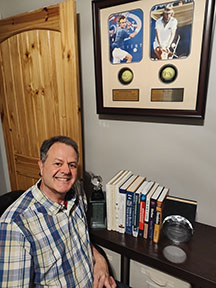
Joe With His Hall of Fame Award
Joe was recently interviewed by Patrick Fowler and Douglas Spaulding on TSG Time with Pat & Doug. You can listen to the episode here.
Compliance Corner
Webinar replay: SEC Marketing Rule FAQs with Lance Dial, Partner, K&L Gates and David Spaulding, DPS, CIPM, TSG Listen as Lance and Dave dive into issues that have challenged advisors since the rule went into effect.
They focus on the SEC’s recently published guidance, addressing:
- Extracted Performance
- What Constitutes Performance (including risk, yield, contribution, and attribution)
- Methodology for Calculating Gross and Net Returns
They walk through each area and unpack the implications for your firm while sharing practical insights to help you align your performance reporting with regulatory expectations. Click Here to Access the Recording.
ATTN: TSG Verification Clients
As a reminder, all TSG verification clients receive full, unlimited access to our Insiders.TSGperformance.com site filled with tools, templates, checklists, and educational materials designed to make compliance and verification as easy as possible for you and your firm.
Contact CSpaulding@TSGperformance.com if you have any questions or are having trouble accessing the site.
TSG Milestones
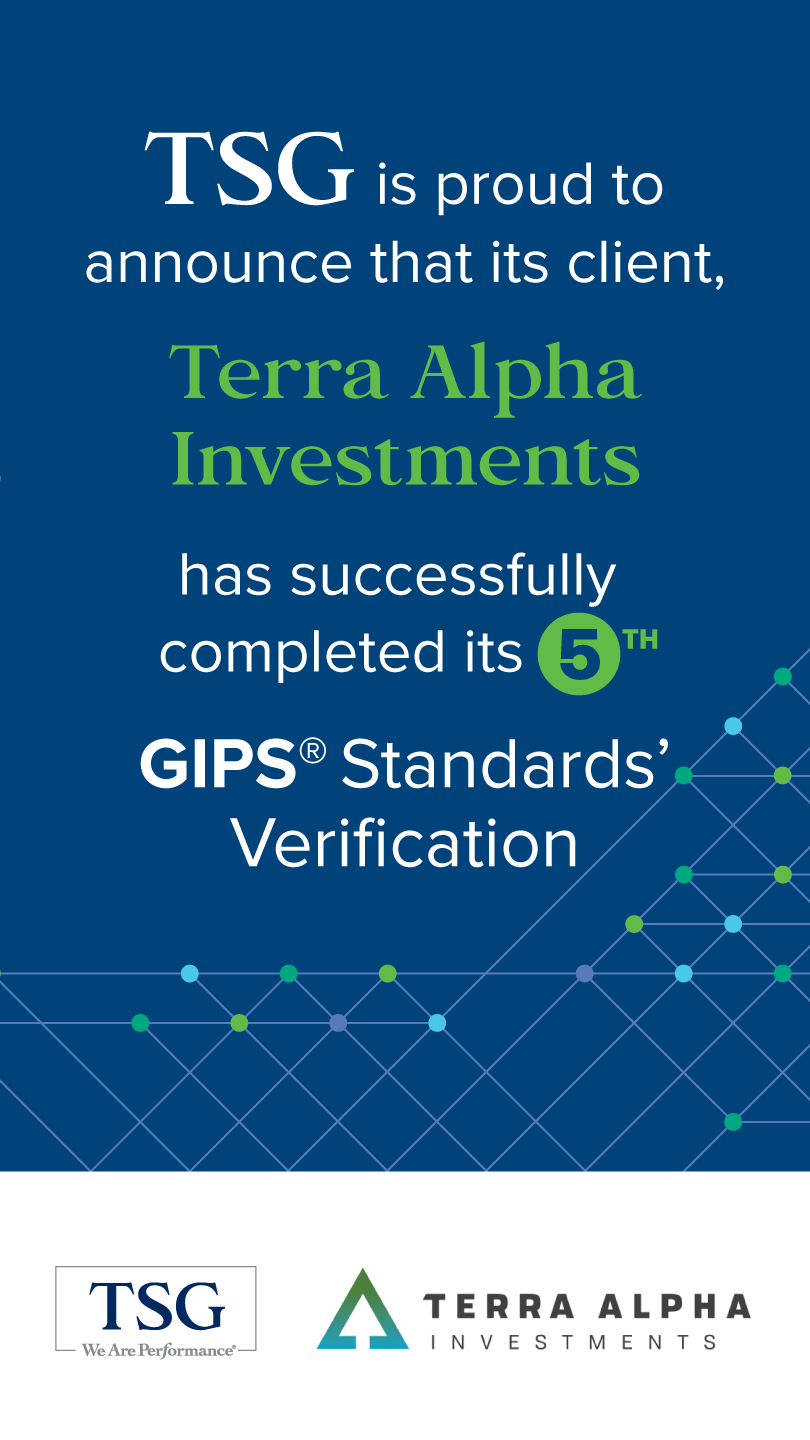
In The News
The One-Day Event Built for European Performance Measurement Professionals
PMAR Europe Conference Agenda
8:00 AM – 8:45 AM
Registration & Continental Breakfast
Vendor showcase, and networking opportunities.
8:45 AM – 9:00 AM
Welcome Address
David Spaulding, DPS, CIPM, TSG
Overview of the conference themes and goals.
9:00 AM – 10:00 AM
Performance Analytics Technology and AI in 2025
Panel discussion featuring experts on leveraging AI and advanced technologies in performance measurement.
Moderator: Chris Spaulding, TSG
Panelists: Ian Thompson, Ph.D., BNY; Alex Serman, First Rate; Paul Farrar, Railpen
10:00 AM – 10:45 AM
2024 Dietz Award Winning Article
10:45 AM – 11:15 AM
Morning Break
Networking with coffee and refreshments.
11:15 AM – 12:00 PM
Risk Modeling
Speaker: Dan diBartolomeo, Northfield
Advances in risk modeling techniques and their implications.
12:00 PM – 13:00 PM
Networking Lunch
Enjoy a buffet lunch and connect with fellow professionals.
13:00 PM – 13:45 PM
Data Management in Performance Measurement
Moderator: Patrick W. Fowler, TSG
Panelists: Steve O’Brien, Rimes; Louise Head, Federated Investors
Key techniques for sourcing, cleaning, and managing data for performance analysis.
13:45 PM – 14:30 PM
Performance Measurement for Private Markets
Speaker: Karina Tanny, CFA, State Street
Insights into performance measurement of private markets and the use of derivatives.
14:30 PM – 15:00 PM
Afternoon Break
Light snacks and beverages available.
15:00 PM – 15:45 PM
Practical Application of Long/Short Portfolio Calculations
Speaker: John D. Simpson, CIPM, TSG
In-depth techniques for calculating performance measurement on long/short portfolios.
15:45 PM – 16:30 PM
Surprises in Performance Measurement
David D. Spaulding, DPS, CIPM, TSG
16:30 PM – 17:00 PM
Interactive Session: Performance Trivia
Engage in a fun and educational quiz testing performance measurement knowledge.
17:00 PM – 18:00 PM
Closing Reception
Drinks, hors d’oeuvres, and networking opportunities to conclude the event.
Excerpt From “101 Essays that will Change the way You Think”
by Brianna Wiest. Reprinted with the author’s permission.
Reprinted with Author’s Permission
I’m reading 101 Essays that will change the way you think, by Brianna Wiest. I found these, and thought you might enjoy reviewing them. They’re from the 9th essay, titled with what’s in the Subject.
- You paid the bills this month and maybe even had extra to spend on nonessentials. It doesn’t matter ho much you belabored the checks as they went out; the point is that they did, and you figured it out regardless.
- You question yourself. You doubt your life. You feel miserable some days. This means you’re still open to growth. This means you can be objective and self-aware. The best people go home at the end of the day and think: “or…maybe there’s another way.”
- You have a job. For however many hours, at whatever rate, you are earning money that helps you eat something, sleep on something, wear something every day. It’s not failure if it doesn’t look the way you thought it would – you’re valuing your independence and taking responsibility for yourself.
- You have time to do something you enjoy, even if “what you enjoy” is sitting on the couch and ordering dinner and watching Netflix.
- You are not worried about where your next meal is coming from. There’s food in the fridge or pantry, and you have enough to actually pick and choose what you want to eat.
- You can eat because you enjoy it. It’s not a matter of sheer survival.
- You have one or two truly close friends. People worry about the quantity but eventually tend to realize the number of people you can claim to be your tribe has no bearing on how much you feel intimacy, acceptance, community, or joy. At the end of the day, all we really want are a few close people who know us (and love us) no matter what.
- You could afford a subway ride, cup of coffee, or the gas in your car this morning. The smallest conveniences (and oftentimes, necessities) are not variables for you.
- You’re not the same person you were a year ago. You’re learning, and evolving, and can identify the ways in which you’ve changed for better or worse.
- You have the time and means to do things beyond the bare minimum. You’ve maybe been to a concert in the last few years, you buy books for yourself, you could take a day trip to a neighboring city if you wanted – you don’t have to work all hours of the day to survive.
- You have a selection of clothing at your disposal. You aren’t worried about having a hat or gloves in a blizzard, you have cool clothes for the summer and something to wear to a wedding. You not only can shield and decorate your body but can do so appropriately for a variety of circumstances.
- You can sense what isn’t right in your life. The first and most crucial step is simply being aware. Being able to communicate to yourself: “Something is not right, even though I am not yet sure what would feel better.”
- If you could talk to your younger self, you would be able to say: “We did it, we made it out, we survived the terrible thing.” So often people carry their traumas into their present lives, and if you want any proof that we carry who we were in the who we are, all you need to do is see how you respond to your inner child hearing, “You’re going to be okay,” from the person you became.
- You have a space of your own. It doesn’t even have to be a home or apartment (but that’s great if it is). All you need is a room, a corner, a desk, where you can create or rest at your discretion; where you govern who gets to be part of your weird little world, and to what capacity. It’s one of the few controls we can actually exert.
- You’ve lost relationships. More important than the fact that you’ve simply had them in the first place is that you or your former partner chose not to settle. You opened yourself to the possibility of something else being out there.
- You’re interested in something. Whether it’s how to live a happier life, maintain better relationships, reading or movies or society or the axis on which the world spins, something intrigues you to explore it.
- You know how to take care of yourself. You know how many hours of sleep you need to feel okay the next day, who to turn to when you’re heartbroken, what you have fun doing, what to do when you don’t feel well, etc.
- You’re working toward a goal. Even if you’re exhausted and it feels miles away, you have a dream for yourself, however vague and malleable.
- But you’re not uncompromisingly set on anything for your future. Some of the happiest and best-adjusted people are the ones who can make any situation an ideal, who are too immersed in the moment to intricately plan and decidedly commit to any one specific outcome.
- You’ve been through some crap. You can look at challenges you currently face and compare them to ones you’ve though you’d never get over. You can reassure yourself through your own experience. Life did not get easier; you got smarter.
GIPS® is a registered trademark owned by CFA Institute. CFA Institute does not endorse or promote this organization, nor does it warrant the accuracy or quality of the content contained herein.
